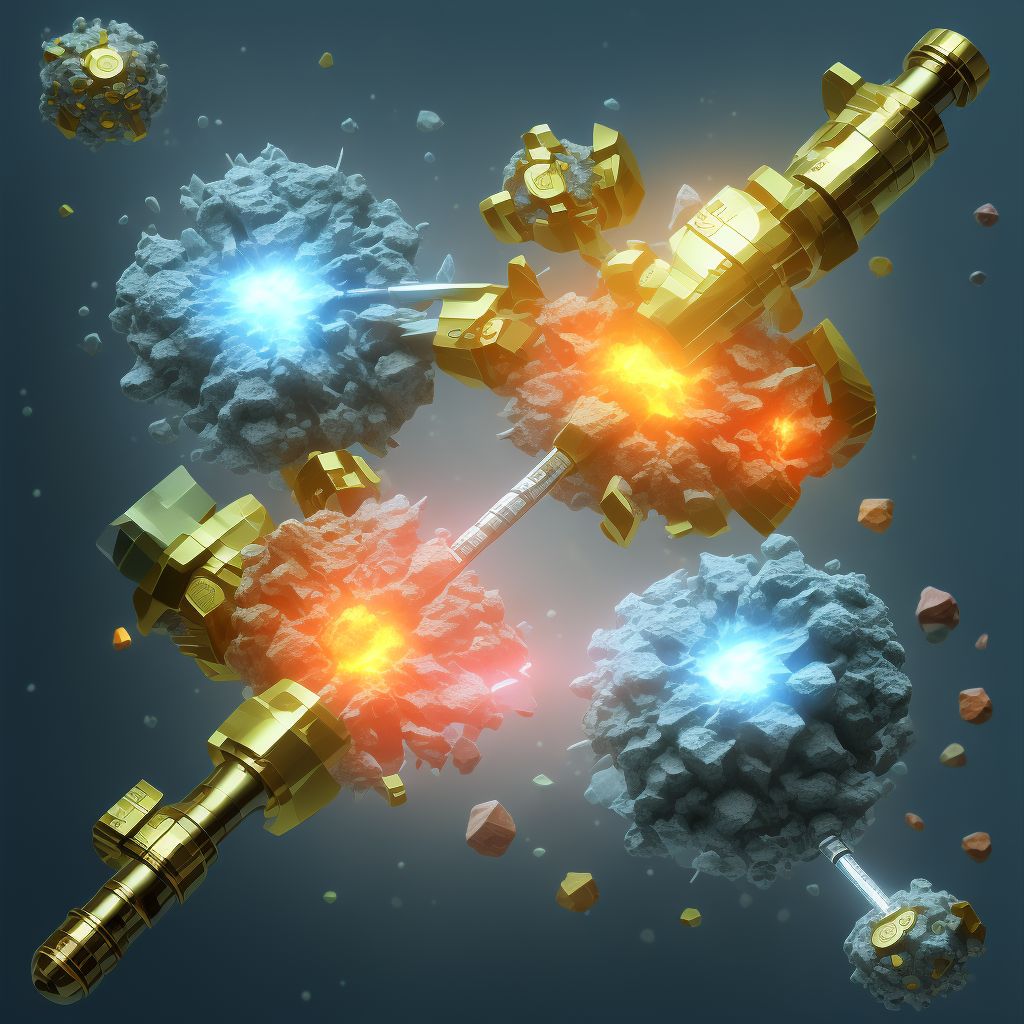
Displaced oblique fracture of shaft of right fibula, subsequent encounter for open fracture type IIIA, IIIB, or IIIC with nonunion Save
ICD-10 code: S82.431N
Disease category: S82.431: Displaced oblique fracture of shaft of right fibula
Displaced Oblique Fracture of Shaft of Right Fibula: Understanding the Severity
A displaced oblique fracture of the shaft of the right fibula is a complex injury that can have serious implications for the patient's mobility and overall well-being. This type of fracture occurs when the bone breaks diagonally across the shaft, resulting in misalignment or separation of the fractured segments. The severity of this fracture can be further classified into types IIIA, IIIB, or IIIC, depending on the presence of open wounds and the extent of soft tissue damage.
When encountering a patient with a subsequent open fracture of the fibula, medical professionals must carefully assess the severity of the injury and its potential complications. An open fracture occurs when the broken bone penetrates the skin, increasing the risk of infection and delaying the healing process. In cases where the fracture is classified as type IIIA, IIIB, or IIIC, it indicates varying degrees of soft tissue damage accompanying the fracture.
Understanding the severity of the fracture is crucial for effective treatment planning and management. Diagnosis usually involves a thorough physical examination, imaging tests such as X-rays or CT scans, and a detailed medical history review. The aim is to determine the extent of the fracture, identify any associated injuries, and evaluate the likelihood of nonunion, a condition where the fractured bone fails to heal properly.
- Displaced oblique fracture of the shaft of the right fibula
- Subsequent open fracture type IIIA
- Subsequent open fracture type IIIB
- Subsequent open fracture type IIIC
- Fracture with nonunion
While we won't be discussing treatment options in this article, it is important to note that prompt and appropriate medical intervention is necessary to optimize healing and minimize complications. Treatment may involve immobilization with a cast or brace, surgical fixation, or a combination of both, depending on the severity of the fracture and associated injuries.
Ultimately, a displaced oblique fracture of the shaft of the right fibula, subsequent encounter for open fracture type IIIA, IIIB, or IIIC with nonunion requires careful evaluation and management to ensure the best possible outcomes for the patient. Early diagnosis and appropriate treatment can help restore function and quality of life, allowing individuals to regain their mobility and resume their daily activities.
Treatment of Displaced oblique fracture of shaft of right fibula, subsequent encounter for open fracture type IIIA, IIIB, or IIIC with nonunion:
Treatment Options for Displaced Oblique Fracture of Shaft of Right Fibula
When it comes to a displaced oblique fracture of the shaft of the right fibula, subsequent encounter for open fracture type IIIA, IIIB, or IIIC with nonunion, there are several treatment options available. The choice of treatment depends on various factors, including the severity of the fracture, the patient'...
To see full information about treatment please Sign up or Log in